
From the outside, the
Guest House at Field Farm in Williamstown is nondescript if not downright ugly. Then you enter the Bauhaus-era home, now a 5-bedroom inn run by the Trustees of Reservations, and you understand the beauty of American modernism. All those rectilinear lines created the perfect opportunity to place large glass windows around the exterior and take in the stunning views of Mount Greylock. Walking into the living room is like walking into a post-modern early 60s museum set where Don Draper is your host. Unlike the architecture, all furniture seems to have curves from the Isamu Noguchi glass coffee table to the swan-backed couch by Vladimir Kagan. For visitors hoping to take in the art at the Clark Art Museum, reopening on July 4th after a major renovation, there’s no better setting.
I started my final day sampling the TTOR properties with breakfast at the Field Farm. Then it was on to another architectural wonder,
Naumkeag in Stockbridge. Formerly owned by the Choate Family of New York before it was bequeathed to The Trustees of Reservations in 1958, Naumkeag is a 44-room Berkshires “Cottage” from the Gilded Age, designed by the prestigious architectural firm of McKim, Mead, and White, and filled with arts, antiques, and collections around from around the world. But it’s the outdoor gardens that truly inspire, a masterpiece of 28 years of collaborative work by former owner, Mabel Choate, and her dear friend, Fletcher Steele, one of America’s first modern landscape architects.
Described by the Library of American Landscape History as a “playground for the imagination,” The Trustees recently completed Phase 1 of an extensive 5-phase, 3-year, $3.3 million garden and landscape restoration project designed to rejuvenate the gardens and bring them back to Choate and Steele’s original vision. I was fortunate to visit Naumkeag prior to Saturday’s opening with Mark Wilson, Curator of Collections. The place hasn’t looked this good since Mabel lived here. The transformation includes the renovation of Fletcher Steele’s iconic Blue Steps, one of the most photographed features in 20th-century American landscape design, lined with budding birches planted last summer. Wilson is almost finished with phase two of the restoration, the Afternoon Garden, where each stone was removed and then meticulously reinserted at the exact same location Steele originally intended. Talk about putting together the pieces of a jigsaw puzzle, this is stone masonry at its finest. Mending the retaining wall and fixing the fountains of the Chinese Garden is still on hold, but Wilson plans to complete the entire project by the summer of 2016. In the meantime, grab food in the café provided by Red Lion Inn and take in the glorious vista of Monument Mountain.
It was August 5, 1850, when 46-year old Nathaniel Hawthorne met fellow author Herman Melville, 32, on a hike up
Monument Mountain. Along with Oliver Wendell Holmes and several others, they brought a wagon loaded with picnic food and champagne to keep the conversation lively. Perched on a ridge, they began to read William Cullen Bryant’s “Monument Mountain,” the story of a young Indian maiden who plunged to her death from the rocky pinnacle when she was forbidden by her Mohican tribe to marry her beloved. When it started to rain, the literary party took to shelter and drink in a recess on the west side of the mountain.
After leaving Naumkeag, I drove 15 minutes south on Route 7 to follow in Hawthorne and Melville’s footsteps and climb the 1,735-foot peak. The hike up, less than 45 minutes, is one of the easiest in the Berkshires—a gradual climb on a well-trodden path through mixed woods of hemlocks, oaks, beech, white pines, red maples, and birches. At a fork, look for a large boulder which commemorates the donation of the park to the Trustees of Reservation in 1899. Here, the trail crawls over rocky ledges to the summit. On this cloudless day, I had vistas of Mt. Everett to the south and the Taconic Range of New York to the west.
Berkshires Regional Director of the Trustees, Joanna Ballantine, who joined me on the hike, shared the news that the Trustees is working out a deal to expand the Monument Mountain property all the way west to the village of Housatonic. This will double the size of the reservation and will include trails that will lead to the summit of Flag Rock. Look for an announcement shortly.
Further south, near the Connecticut border, I made my final stop of the trip at
Bartholomew’s Cobble. Walking on the Ledges Trail, the Housatonic River snakes through dairy farms on the left while eroding limestone and quartzite rocks formed the cobble to our right. I took a slight detour at Corbin’s Neck to get a closer view of the river and the cows resting on its banks. Continuing on the Tulip Tree Trail, I strolled uphill through a forest of tall hemlocks before reaching a clearing. At a short summit, there was a bench to sit on and take in the views of Mount Everett and Mount Race.
Then I veered left on the Hal Borland Trail to visit the Ashley House. Built by Colonel John Ashley in 1735, this is the oldest dwelling in Berkshire County. Colonel Ashley was a pioneer, lawyer, judge and patriot who furnished iron and other supplies for the Revolutionary War effort. He would craft the Massachusetts constitution upstairs with his friend Ethan Allan. On tours on weekend days in the summer, you’ll hear
the story of Mumbet, a slave of the Ashleys who sued her way to freedom. Both the Ashley House and Naumkeag are part of the free
Home Sweet Home Open House Day on Saturday, May 31st.
I want to thank The Trustees of Reservations for setting up my week, especially Kristi Perry for sharing her favorite properties. I want to thank Mother Nature for supplying five perfect days of sunshine. Be on the lookout for my story in the Boston Globe featuring many of the sites I visited this week. As always, thanks for checking in. Enjoy the Memorial Day Weekend!
 In a May/June 2000 story for Transitions Abroad magazine entitled “The Best and Worst Of Europe—with Apologies to None,” Rick Steves writes “the area south of Edinburgh is so boring the Romans decided to block it off with Hadrian’s Wall.” In another section of the piece (still found online and worthy of a download), Steves notes, “Oxford pales next to Cambridge, and Stratford is little more than Shakespeare’s house—and it’s as dead as he is.” Then there’s this juicy tidbit: “A hundred years ago, Athens was a sleepy town of 8,000 people with a pile of ruins in its backyard. Today, it’s a giant mix of concrete, smog, noise, tourists, and four million Greeks. See the four major attractions (the Acropolis, Agora, Plaka, and great National Archaeological Museum) and get out to the islands or countryside.”
In a May/June 2000 story for Transitions Abroad magazine entitled “The Best and Worst Of Europe—with Apologies to None,” Rick Steves writes “the area south of Edinburgh is so boring the Romans decided to block it off with Hadrian’s Wall.” In another section of the piece (still found online and worthy of a download), Steves notes, “Oxford pales next to Cambridge, and Stratford is little more than Shakespeare’s house—and it’s as dead as he is.” Then there’s this juicy tidbit: “A hundred years ago, Athens was a sleepy town of 8,000 people with a pile of ruins in its backyard. Today, it’s a giant mix of concrete, smog, noise, tourists, and four million Greeks. See the four major attractions (the Acropolis, Agora, Plaka, and great National Archaeological Museum) and get out to the islands or countryside.”
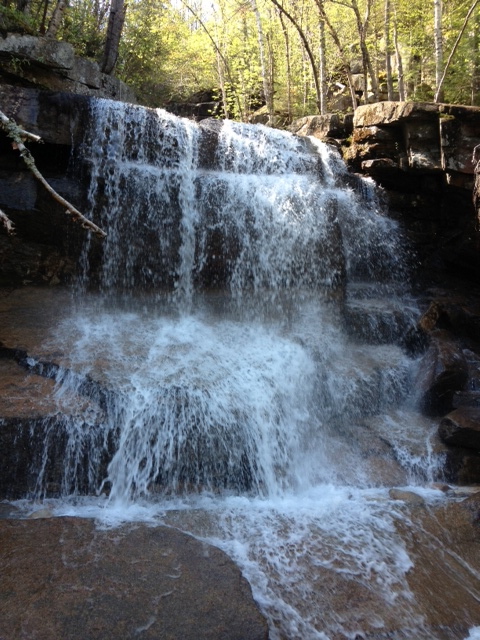 I spent Memorial Day Weekend in the White Mountains with family and friends, finally bagging Mount Chocorua. Standing 3,478-feet high, it doesn’t make the 4,000-foot club and therefore many avid climbers blow it off. They shouldn’t. This is a classic New England climb with an exquisite panorama of the southern Presidential range and enough granite to leave your quads burning by the end of the trek. We took the Champney Falls Trail, named after the artist who painted the distinctive rocky summit of this peak. Within an hour, we reached picturesque Champney Falls and watched the rushing water stream down a series of ledges. Two hours later, after scrambling through rock, we reached the summit, initially socked in a cloud. Once it started to clear up, we were treated to glorious views of the lakes and green valley below, the snow-covered trails of Mt. Washington in the distance.
I spent Memorial Day Weekend in the White Mountains with family and friends, finally bagging Mount Chocorua. Standing 3,478-feet high, it doesn’t make the 4,000-foot club and therefore many avid climbers blow it off. They shouldn’t. This is a classic New England climb with an exquisite panorama of the southern Presidential range and enough granite to leave your quads burning by the end of the trek. We took the Champney Falls Trail, named after the artist who painted the distinctive rocky summit of this peak. Within an hour, we reached picturesque Champney Falls and watched the rushing water stream down a series of ledges. Two hours later, after scrambling through rock, we reached the summit, initially socked in a cloud. Once it started to clear up, we were treated to glorious views of the lakes and green valley below, the snow-covered trails of Mt. Washington in the distance.  From the outside, the
From the outside, the  Massachusetts might border the ocean, but it’s not until you drive the interior of this state on backcountry roads that you really appreciate the abundance of water. I woke up at
Massachusetts might border the ocean, but it’s not until you drive the interior of this state on backcountry roads that you really appreciate the abundance of water. I woke up at 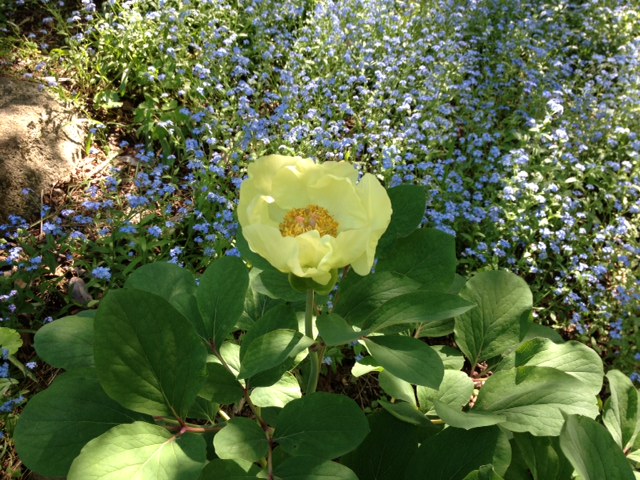 As editor and publisher of the Atlantic Monthly, Ellery Sedgwick worked with some of the finest writers of his time, including Ernest Hemingway and Robert Frost. Yet, it’s his marriages to not one, but two accomplished gardeners and horticulturists that has had far more of a lasting impression. In 1916, Sedgwick moved with his first wife, Mabel, to a 114-acre hillside property in the North Shore. He built a Federal-style brick house and even had the verandah shipped from a former hotel in Charleston. The house sits atop a drumlin staring out at forest, but it’s the incredible gardens at
As editor and publisher of the Atlantic Monthly, Ellery Sedgwick worked with some of the finest writers of his time, including Ernest Hemingway and Robert Frost. Yet, it’s his marriages to not one, but two accomplished gardeners and horticulturists that has had far more of a lasting impression. In 1916, Sedgwick moved with his first wife, Mabel, to a 114-acre hillside property in the North Shore. He built a Federal-style brick house and even had the verandah shipped from a former hotel in Charleston. The house sits atop a drumlin staring out at forest, but it’s the incredible gardens at 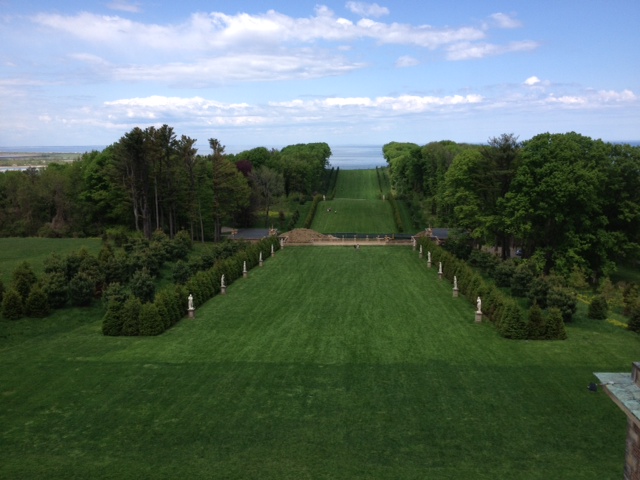 In 1949, the descendants of plumbing magnate Richard Crane bestowed their entire 2100-acre estate in Ipswich, 30 miles north of Boston in Cape Ann, to the Trustees of Reservations. This includes their 59-room Stuart-style mansion, the grounds designed by none other than the Olmsted brothers, a 4.5-mile stretch of Atlantic beach, and a ten-room 19th century cottage and connected tavern which is now the Inn at Castle Hill. Unlike the unheralded properties I visited yesterday, the Crane Estate is the crown jewel of the Trustees sites, especially Crane Beach, beloved by New Englanders.
In 1949, the descendants of plumbing magnate Richard Crane bestowed their entire 2100-acre estate in Ipswich, 30 miles north of Boston in Cape Ann, to the Trustees of Reservations. This includes their 59-room Stuart-style mansion, the grounds designed by none other than the Olmsted brothers, a 4.5-mile stretch of Atlantic beach, and a ten-room 19th century cottage and connected tavern which is now the Inn at Castle Hill. Unlike the unheralded properties I visited yesterday, the Crane Estate is the crown jewel of the Trustees sites, especially Crane Beach, beloved by New Englanders. Turkey Hill Lane is an apt name for the road that leads to
Turkey Hill Lane is an apt name for the road that leads to 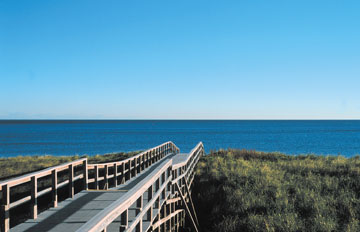 While Crane Beach is still the best-known
While Crane Beach is still the best-known  Several summers ago, I was hired by Chevrolet to drive a Chevy Malibu from Boston to Washington, DC on one tank of gas and then write about the experience. It was an absurd assignment, made even more ridiculous by the macho photographer they hired to take shots for their glossy magazine. It was a brutally hot day and seeing that he was following my wife and me in a convertible, I asked if he needed any suntan lotion. "Oh no, I don’t need that," said the guy. By the end of the drive around 9 pm, he was as red as a boiled lobster.
Several summers ago, I was hired by Chevrolet to drive a Chevy Malibu from Boston to Washington, DC on one tank of gas and then write about the experience. It was an absurd assignment, made even more ridiculous by the macho photographer they hired to take shots for their glossy magazine. It was a brutally hot day and seeing that he was following my wife and me in a convertible, I asked if he needed any suntan lotion. "Oh no, I don’t need that," said the guy. By the end of the drive around 9 pm, he was as red as a boiled lobster. 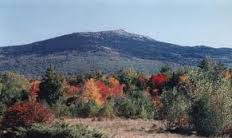 Climbing the broad-shouldered peak Henry David Thoreau called a “sublime mass,” Mt. Monadnock, is a rite of passage for many New England children. Just over the border of Massachusetts in southern New Hampshire, Monadnock is less than a two-hour drive from Boston. Its accessibility and locale, smack dab in the center of New England, has made it one of the two most popular mountain ascents in the world going toe-to-toe with Japan’s Mount Fuji.
Climbing the broad-shouldered peak Henry David Thoreau called a “sublime mass,” Mt. Monadnock, is a rite of passage for many New England children. Just over the border of Massachusetts in southern New Hampshire, Monadnock is less than a two-hour drive from Boston. Its accessibility and locale, smack dab in the center of New England, has made it one of the two most popular mountain ascents in the world going toe-to-toe with Japan’s Mount Fuji.